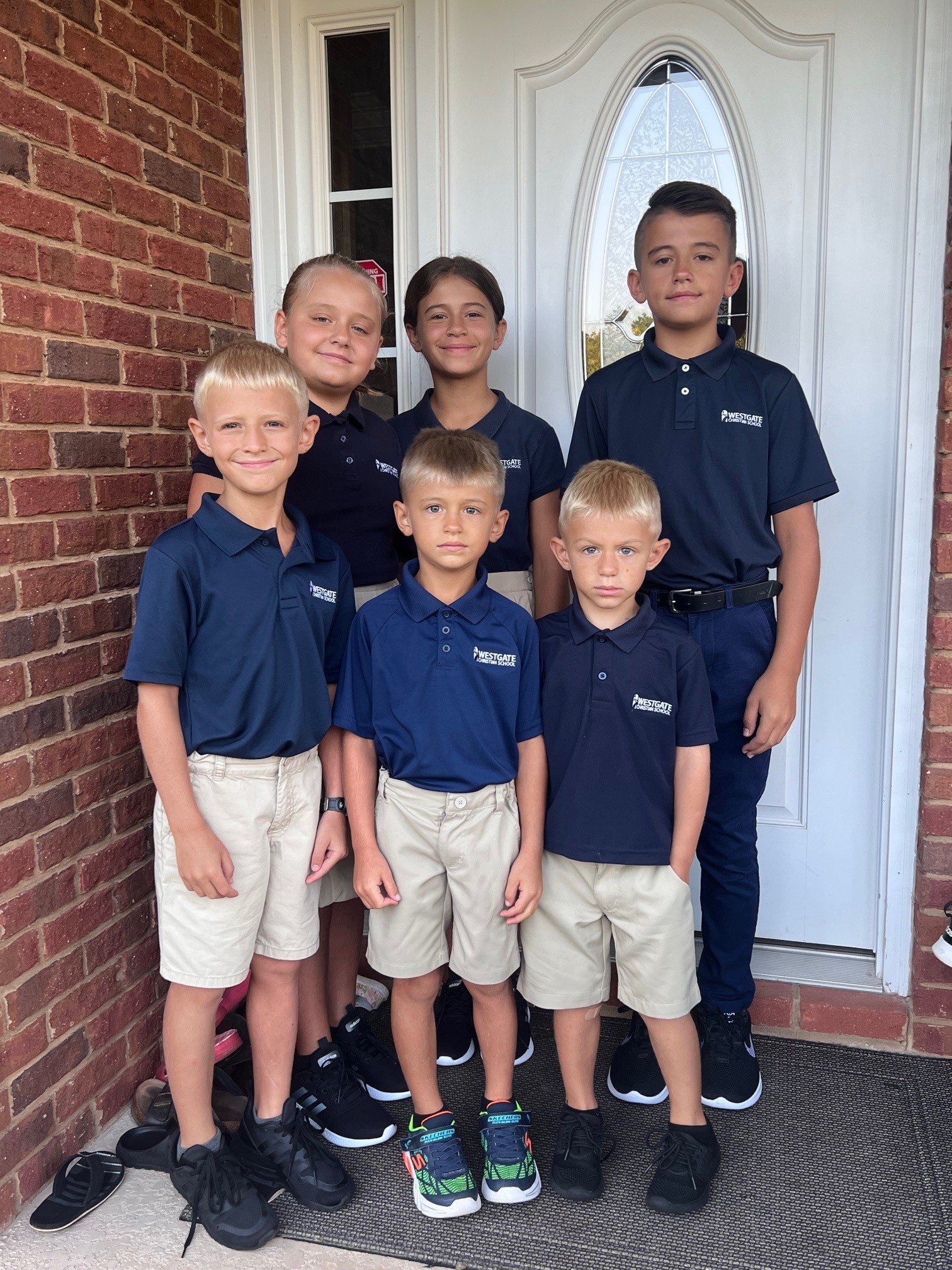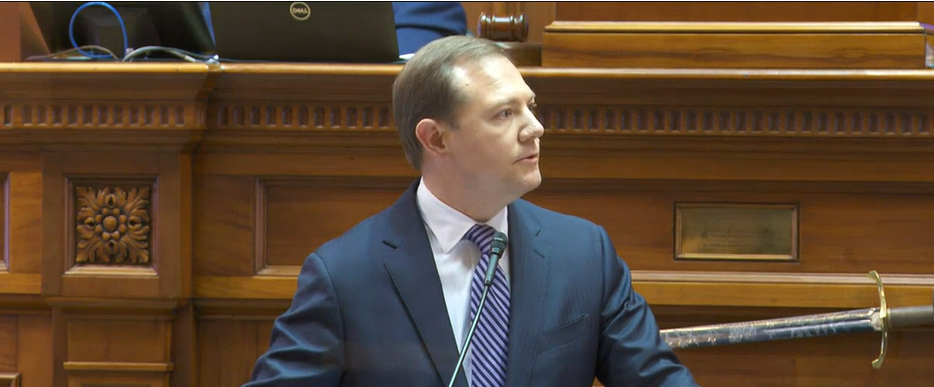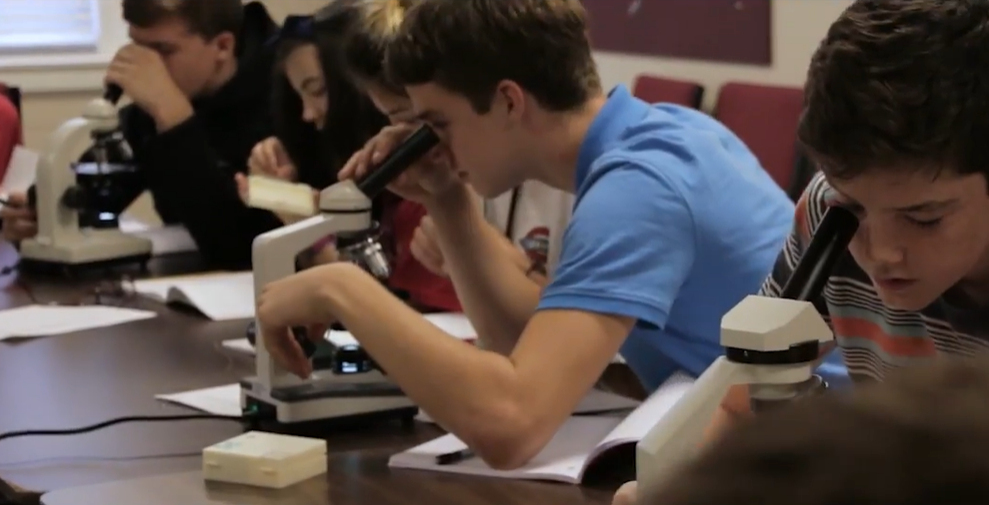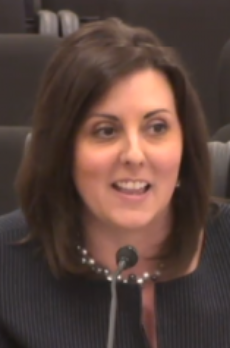
When Constantine and Aliona Shulikov left the former Soviet Union as children to escape religious persecution three decades ago, public education there was one-size-fits-all. Students attended assigned cookie-cutter government schools and took the same classes, with the same curriculum, with no room for individuality.
“Parents played no role and had no input in their children’s education,” Constantine said. “Alternatives such as private schools or homeschooling didn’t exist and wouldn’t even cross a parent’s mind.”
The freedom Constantine and his wife gained from becoming United States citizens made personalized education for their children even more precious.
Constantine, whose job involves designing and sometimes leading training programs for a large corporation, especially recognizes that no one way of learning works best for everyone.
After moving from Oregon to the South Carolina foothills to be close to family, they sought the best education for their five school-aged children. Private Christian schools, though attractive, were financially out of reach. So, for the older kids, they chose a charter school that specialized in environmental sustainability. The two youngest were homeschooled. Though not ideal, the arrangement worked.
They had heard of education choice scholarships in neighboring North Carolina. They wished South Carolina had something similar.
“We joked that maybe we should buy something right across the border so our kids could participate in the scholarship program,” Constantine said. Having access to such programs, he said, “was like a dream.”
Last year, their dream came true when the South Carolina General Assembly passed a new scholarship program. Under the Education Trust Fund Scholarship program, families who met income-based thresholds received $6,000 per student in an education savings account. After four of their five school-age children qualified for scholarships, the Shulikovs transferred them to Westgate Christian School. The school has an enrollment of 260 students ages 3 through 12th grade and is affiliated with Westgate Baptist Church, which drew its name from a nearby shopping mall built in the 1970s. Its smaller class sizes, faith-based instruction, and overall sense of community made it the perfect fit for all the kids, who range in age from 5 to 13 and whose diverse interests include books, sports, and art.
“They all love school and make friends very easily,” Constantine said. “It was a perfect fit”
The new school year got off to a great start. However, less than two months later, the South Carolina Supreme Court struck down the part of the program that allowed parents to spend their funds on private school tuition.
The ruling said the provision ran afoul of the state constitutional ban on public funds directly benefiting religious or private schools. Even though the funds allowed families to choose from a plethora of options that included public schools, the state’s high court called that argument “window dressing” and struck down the use of funds for private school tuition. Families are still allowed to use scholarships to pay for other state-approved uses in the program such as curriculum, tutoring and therapies.
Constantine still remembers the text from his wife the day the state Department of Education emailed that private school tuition payments would end immediately to comply with the Supreme Court ruling.
“It was a pretty big blow when we first heard the news,” said Constantine, who described the timing of the ruling as “jarring” and said his older kids expressed disappointment when he and his wife told them they might have to return to their former school.
Soon after the ruling, Constantine appeared along with other scholarship parents in videos produced by the Palmetto Promise Institute, a think tank that supports education choice. His public plea to save the program caught the attention of attorneys at the Institute for Justice, a national public interest law firm that supports education choice issues. He agreed to partner with the law firm as one of two plaintiffs in a lawsuit against the state.
The petition, which will be considered by a court that includes a replacement for the retiring anti-choice chief justice, asks the state high court to restore the program. It challenges the state ban and argues it violates the U.S. Constitution and U.S. Supreme Court. That includes the right to choose a private school.
“The state is penalizing parents who choose private schools for their children, a choice protected by the U.S. Constitution. The state cannot point to the South Carolina Constitution as justification for this discrimination, because the federal Constitution prohibits it,” IJ Senior Attorney Michael Bindas said.
Constantine, who is his household’s sole breadwinner, got a reprieve when wealthy donors contributed to a fund to cover scholarship families’ tuition costs temporarily. South Carolina lawmakers are already working on legislation that would rely on state lottery proceeds, which are not classified as public funds, to pay for the program.
Constantine, who said he has never sued anyone in his life, called it “an opportunity to stand up for my kids’ education.” He said IJ’s willingness to fight for the families, along with what’s going on in the legislature, gives him and his family hope.
“There’s some real emotion,” he said. “It was like a high and then a low, an unexpected blow. It was like getting the rug pulled right out from under you.”
The Japanese art of pottery, kintsugi, uses gold in the process of reconstituting something broken. Rather than attempting to conceal the repair, kintsugi makes something new and even more beautiful than the original. Author Jay Wolf notes a spiritual lesson:
The story of kintsugi — this style of pottery — may be the most perfect embodiment of all our trauma-shattered lives... Instead of throwing away the broken beloved pottery, we’ll fix it in a way that doesn’t pretend it hasn’t been broken but honors the breaking—and more so, the surviving — by highlighting those repaired seams with gold lacquer. Now the object is functional once again and dignified, not discarded. It’s stronger and even more valuable because of its reinforced, golden scars.
South Carolina choice supporters have suffered a trauma in a recent ruling striking down the state’s Education Scholarship Account program. In an absurd 3-2 ruling, the majority found that the ESA program violated language in the South Carolina Constitution prohibiting “direct” state funding to private schools. ESA funding goes to a parent-directed account, which has numerous educational uses other than private school tuition. The Arizona courts, for example, recognized this distinction between ESAs and vouchers when choice opponents made a similar challenge in the Grand Canyon State. From the unanimous Appeals Court decision (which the Arizona Supreme Court later refused to reconsider):
The ESA does not result in an appropriation of public money to encourage the preference of one religion over another, or religion per se over no religion. Any aid to religious schools would be a result of the genuine and independent private choices of the parents. The parents are given numerous ways in which they can educate their children suited to the needs of each child with no preference given to religious or nonreligious schools or programs. Parents are required only to educate their children in the areas of reading, grammar, mathematics, social studies, and science.
Where ESA funds are spent depends solely upon how parents choose to educate their children. Eligible school children may choose to remain in public school, attend a religious school, or a nonreligious private school. They may also use the funds for educational therapies, tutoring services, online learning programs and other curricula, or even at a postsecondary institution.
The specified object of the ESA is the beneficiary families, not private or sectarian schools. Parents can use the funds deposited in the empowerment account to customize an education that meets their children’s unique educational needs.
Thus, beneficiaries have discretion as to how to spend the ESA funds without having to spend any of the aid at private or sectarian schools.
South Carolina students deserved a Supreme Court majority which would have recognized the soundness of this thinking. As an alternative, South Carolina choice supporters should emulate the actions of their Grand Canyon State peers in performing school choice kintsugi. It was the loss of two small voucher programs, one for students with disabilities, the other for foster care students, that inspired the creation of the nation’s first account-based choice program. Lawmakers from across the country obviously appreciated the beauty of Arizona’s kintsugi choice program, as it has been widely emulated.
While the loss in the South Carolina Supreme Court leaves thousands of families in limbo, Palmetto State lawmakers should seize the kintsugi opportunity. Judges would have to engage in truly absurd mental gymnastics to find a version of Oklahoma’s Parental Choice Tax Credit to be “direct” aid. What Oklahoma lawmakers created lawmakers in South Carolina can optimize and perfect. A perfected Oklahoma style credit could be even more robust and indeed more beautiful than the ESA program. Beauty, as Dante observed, awakens the soul to act.
 Earlier this year, I wrote for reimaginED that South Carolina educators were publicly debating the nature and purpose of education in the state. Whether schools should focus on STEM or liberal arts, or some combination, is a good discussion to have.
Earlier this year, I wrote for reimaginED that South Carolina educators were publicly debating the nature and purpose of education in the state. Whether schools should focus on STEM or liberal arts, or some combination, is a good discussion to have.
But since taxpayers are spending three times as much per student today than when their grandparents were in school, after adjusting for inflation, and yet two-thirds of fourth graders in the state cannot read at grade level, parents are right to wonder if the education “experts” are asking the right questions.
Deliberation is usually a welcome part of democratic life, but not when children can’t read. South Carolina lawmakers are — again, for at least the eighth time in as many years —considering proposals in both state legislative chambers that would empower parents to identify and then meet their child’s needs.
These proposals stalled last year after lawmakers failed to compromise on different approaches to providing students with more options. This year’s proposals in the House and Senate pose a similar quandary: Do South Carolina students need access to private school scholarships or education savings accounts?
The answer is … both.
Some families may choose a private school for their child, like the families profiled regularly on this blog. (See here, here and here.) Others may want to customize their child’s education, which is becoming more common around the country. Just this year, lawmakers in Arkansas, Iowa, and Utah approved new accounts or account-style options for families.
South Carolina lawmakers should note, however, that some Iowa and Utah families also have access to tax credit scholarships, and Arkansas students with special needs, in foster care or in military families, can apply for private school scholarships.
Meanwhile, families still looking across state lines at learning opportunities elsewhere will notice that in North Carolina, families of children with special needs can use education savings accounts and private school scholarships — at the same time, if they choose.
Florida, Mississippi, and Georgia all have combinations of private school scholarships and/or education savings accounts.
Why not just combine the two proposals in South Carolina and let parents choose which option is best for their student?
Lawmakers nationwide also are recognizing that parent rights and education choice fit nicely together and are trying to advance both, sometimes in the same proposal. The proposal that created education savings accounts in Arkansas also gave parents more rights over their child’s learning experience, including the ability to view school curriculum.
In Texas, state lawmakers are considering a proposal that would offer education savings accounts to every child in the state while also providing more academic transparency. South Carolina policymakers have also been debating academic transparency proposals. So why not just get the job done on all these issues simultaneously, in the same or separate proposals?
Legislators should consider education choice proposals — tax credit scholarships, education savings accounts, etc.— and requirements that assigned schools post curriculum and homework assignments online as part of the same effort to empower parents.
Surveys show strong support for all these ideas. A nationally representative survey conducted by Harvard and Stanford finds that 51% of parents favor education savings accounts compared to 38% who oppose, while a Heritage Foundation survey found that nearly 63% of parents said academic transparency is important to them.
A Rasmussen poll from 2022 found that 84% of voters were in favor of giving parents the ability to see the content their children are learning. Lawmakers considering these ideas linking school choice and parent rights clearly have support behind them.
Now, as Texas races to catch up with Florida and adopt the next education savings account proposal, (Florida Gov. Ron DeSantis signed an education savings account expansion into law on Monday), South Carolina families will be eyeing the calendar to see how much time state legislators have left this year to give students hope for the future.
Since state officials have proposals for all the different options, there is no need to choose just one.

South Carolina Sen. Wes Climber, speaking in favor of the bill, pointed out: “This is the core of the middle class in South Carolina. These are folks who ought to have the opportunity to send their children to a school of their choice by way of the program we are discussing here today.”
Editor’s note: This article appeared Thursday on redlion.com.
The South Carolina Senate approved a bill this week granting 15,000 students access to education savings accounts.
“There will be children whose lives will be changed for the better because of this bill,” Sen. Greg Hembree, R-District 28, chair of the Senate Education Committee, told reporters after the debate.
“This is the core of the middle class in South Carolina. These are folks who ought to have the opportunity to send their children to the school of their choice by way of the program we are discussing here today,” Rep. Wes Climer, R-York, said during debate.
The bill passed 28-15 and has been sent to the state’s House of Representatives.
ESA programs typically put a state’s share of per-pupil education funding into individual student accounts. Parents can then use the funds for approved education expenses, such as private school tuition, tutoring, homeschooling and technology.
In South Carolina, the accounts would be funded with up to $6,000 by the state for students whose families fall below 400% of the federal poverty level, an expansion of its current program. If passed in the House, the law could still be struck down by the state’s Supreme Court.
South Carolina is one of 37 states that have Blaine Amendments in their constitutions which prohibit public funds from going to religious or private education establishments.
In 2020, South Carolina Supreme Court struck down a voucher program funded with federal COVID-19 money by Republican Gov. Henry McMaster as a violation of the Blaine Amendment.
To continue reading, click here.

The Upstate Homeschool Co-op launched in Greenville, SC, in 1997 to provide families who are educating their children at home with enhancement opportunities that span academics and extracurricular activities.
Educators are in such high demand in South Carolina that observers are calling it a “teacher’s market.” While it’s reassuring that teachers have options, shouldn’t state officials make the education landscape a student’s market, too?
Fortunately for families, some policymakers are already working on it.
A recent survey of South Carolina teachers found that half of those who left their jobs in the 2020-21 school year did not retire; they moved to another school. When asked the single most important reason behind switching schools, most respondents said it was because they had moved to a different home and desired a “more conveniently located” position.
The head of the South Carolina Education Association said teachers can “shop around to look for class size or better classes or better retirement” right now, making the job market one that favors educators.
Such opportunities are great for teachers, but South Carolina should join the 21 other states that created or expanded learning options this year. Some South Carolina lawmakers are designing an education savings account proposal that would allow children from low-income homes and students who struggle with reading, along with children facing other learning challenges, to choose how and where they learn.
The proposal would create accounts similar to Florida’s Gardiner Scholarships (which recently merged with the McKay private school scholarship program to become the Family Empowerment Scholarships), Arizona’s Empowerment Scholarship Accounts, and the new account-style options in West Virginia, Indiana and New Hampshire.
Lawmakers in South Carolina’s neighbors to the north, west, and two states over to the south (North Carolina, Tennessee, and Mississippi, respectively) also allow children with special needs to access education savings accounts. In fact, North Carolina offers students with special needs three private school scholarship options.
With an account, the state deposits a portion of a child’s funds from the state formula into a private account that parents use to buy education products and services including textbooks, personal tutoring services, private school tuition, and education therapies.
These options cannot come fast enough for children in South Carolina. As reimaginED senior writer Lisa explained in an interview with Ellen Weaver, head of the Palmetto Promise Institute, South Carolina students lag behind their peers in national comparisons. Only Mississippi “keeps South Carolina from finishing dead last in national rankings,” and students there have demonstrated larger gains in reading than South Carolina students in recent years on the nation’s report card.
The state has not been able to spend its way to a better ranking. According to federal data, South Carolina increased its per-pupil spending by nearly 25 percent over an eight year period from the 1999-2000 school year to the 2017-18 school year. It now spends more than $15,500 per student annually, according to Palmetto Promise.
Yet in some of the state’s poorest districts, where student poverty rates reach as high as 94%, most students still cannot read by the end of third grade. In districts such as Bamberg 2 and Barnwell 19, the share of third graders meeting or exceeding reading standards stands at 10% or less.
Fewer than one in three eighth grade students demonstrate proficiency in math statewide. In low-income areas such as Bamberg and Barnwell, along with larger districts like Dillon 4 and Williamsburg (which also have poverty levels above 90%), math proficiency rates are in the single digits.
While the South Carolina teacher survey found remarkable mobility among teachers, lawmakers should recognize other research showing that students are moving in significant numbers, too, with many dropping off the public rolls entirely. A study from the National Bureau of Economic Research found that public school enrollment decreased by 2% last fall, a striking change to a statistic that sees little variation year to year.
Absenteeism jumped last year among students who do not speak English as their first language, and school officials around the country are still trying to find thousands of high schoolers who simply vanished from the rolls during the pandemic.
Clearly, students are moving, just like teachers. But neither researchers nor educators know where all those young people have gone, and have reason to expect the worst, especially among the most disadvantaged student populations.
South Carolina lawmakers have every reason to make the state’s education market, already pitched in teachers’ favor, a market in which students can choose from excellent options, too.

Shannon Green of Columbia, South Carolina, pictured with her son Kaleb, is among a groundswell of parents advocating for education choice in their state. Ellen Weaver’s Palmetto Promise Institute is dedicated to opening doors for families like Green’s.

Ellen Weaver
Ellen Weaver epitomizes education choice. She attended a private Christian school from kindergarten to fifth grade, was homeschooled from sixth to tenth grade, and graduated from a district high school.
Since 2013, she has worked as founding president of the nonprofit Palmetto Promise Institute to bring expanded choice to her native South Carolina.
“I’m so grateful to my parents for the incredible sacrifices they made to get me the opportunities I needed,” said Weaver, who grew up in Iowa but came home to attend college at a Bob Jones University, where she majored in political science and government. “I needed different things at different points in my education journey.”
Weaver, who describes herself as a child as “a little bookworm,” got interested in politics while riding in the car with her father, who liked to listen to conservative talk radio. She admits with a laugh to being a “Rush Baby,” a nickname that Rush Limbaugh gave to those who listened to his show as kids.
She entered college planning to major in piano performance – she had played since she was 8 – but realized she didn’t want to make a lifetime commitment. So, she opted for her other passion: politics.
Weaver spent summers working to help pay her college expenses, so she couldn’t afford to intern in Washington, D.C. But she got an opportunity to intern locally for then-U.S. Rep. Jim DeMint, a Republican who was ranked in 2011 as the 10th most conservative U.S. senator by the National Journal. DeMint also was a staunch supporter of education choice.
Right before Weaver’s graduation in 2001, an executive assistant position opened in DeMint’s Washington office. Weaver got the job and served until 2005. When DeMint was elected to the Senate, she moved with him and served as his senior adviser until she returned to South Carolina to be his state director in 2009.
When DeMint announced his resignation from the Senate after eight years to become president of the Heritage Foundation in 2013, Weaver knew she soon could be out of a job. However, she wasn’t finished with policy. A review of the state’s political landscape showed a scarcity of think tanks in South Carolina – organizations that perform research and advocacy on certain topics.
She decided the state, known for its top-down culture and lack of results in the education arena despite above-average per-pupil spending, could benefit from such efforts. ,With inspiration and seed money from DeMint and other donors, Weaver founded the Palmetto Promise Institute in 2013 to open doors for expanded education choice in South Carolina.
Weaver has been watching Florida’s success with education choice legislation and wants to replicate that in her state. She is acutely aware that in 1998, South Carolina third graders outperformed their Florida counterparts on National Association of Education Progress reading tests but have since fallen behind.
“Thanks to reforms enacted by then-Gov. Jeb Bush, in the years since, they have totally leapfrogged us,” Weaver said.
She attributes South Carolina’s lack of success in passing reforms like Florida’s as a resistance to change.
“The people at the top of the pyramid, they get along just fine,” she said. “Their kids have a good school to go to, or they have the financial capacity to make a good decision for their child. So, it’s just not on their radar.”
Weaver says even Mississippi, the state that keeps South Carolina from finishing dead last in national rankings, has realized more gains in reading than the Palmetto State in recent years.
South Carolina does offer education choice in the form of a program called Exceptional SC, which helps students with exceptional needs attend credentialed private schools through scholarships for tuition or tax credits awarded to parents or guardians for tuition expenses. The state’s charter school movement, now 25 years old, also has become more robust.
Weaver says the pandemic and the close-up look it’s afforded parents into their children’s education has created a groundswell of support for education choice. She notes this especially has been the case since the South Carolina Supreme Court struck down Gov. Henry McMaster’s attempt to use $32 million in federal COVID-19 relief to create scholarships for lower-income families to keep their children in private schools during the pandemic.
That ruling has spurred a bill for the upcoming legislative session that would offer educational savings accounts to students in low-income families. Some families have appeared in videos like this one to show how the pandemic has disrupted their children’s education and to encourage support for the education choice bill.
If state legislators approve the bill, South Carolina will join 21 other states that adopted, expanded or improved education choice programs during the era of COVID-19.
Weaver said she is optimistic that the parents’ voices will inspire lawmakers to embrace change so that all families will have access to the educational opportunities that best fit their needs.
“I think we are at a tipping point,” she said.